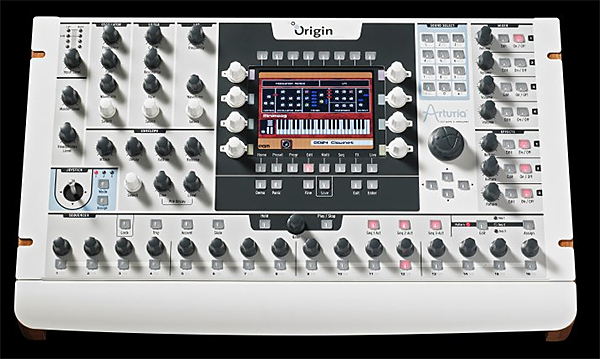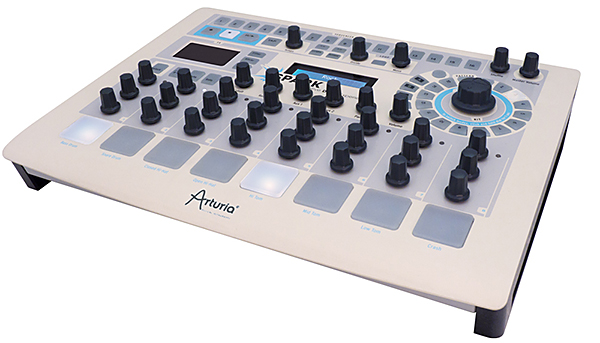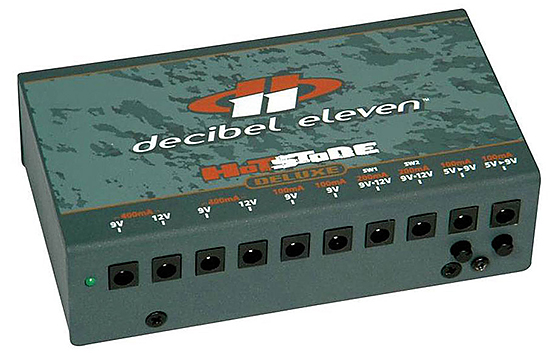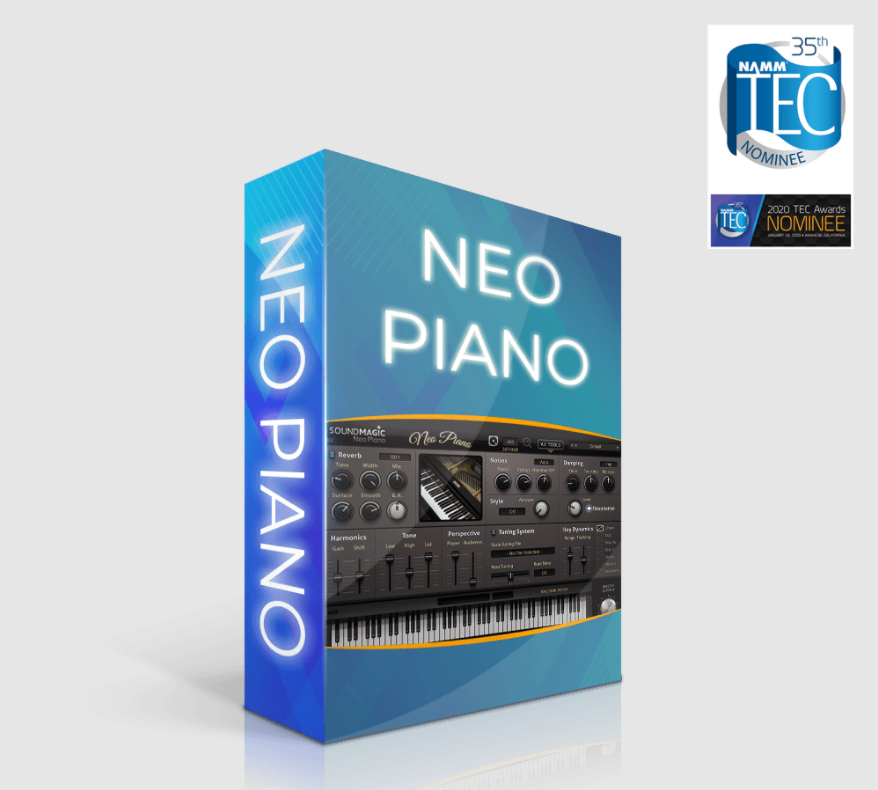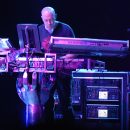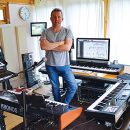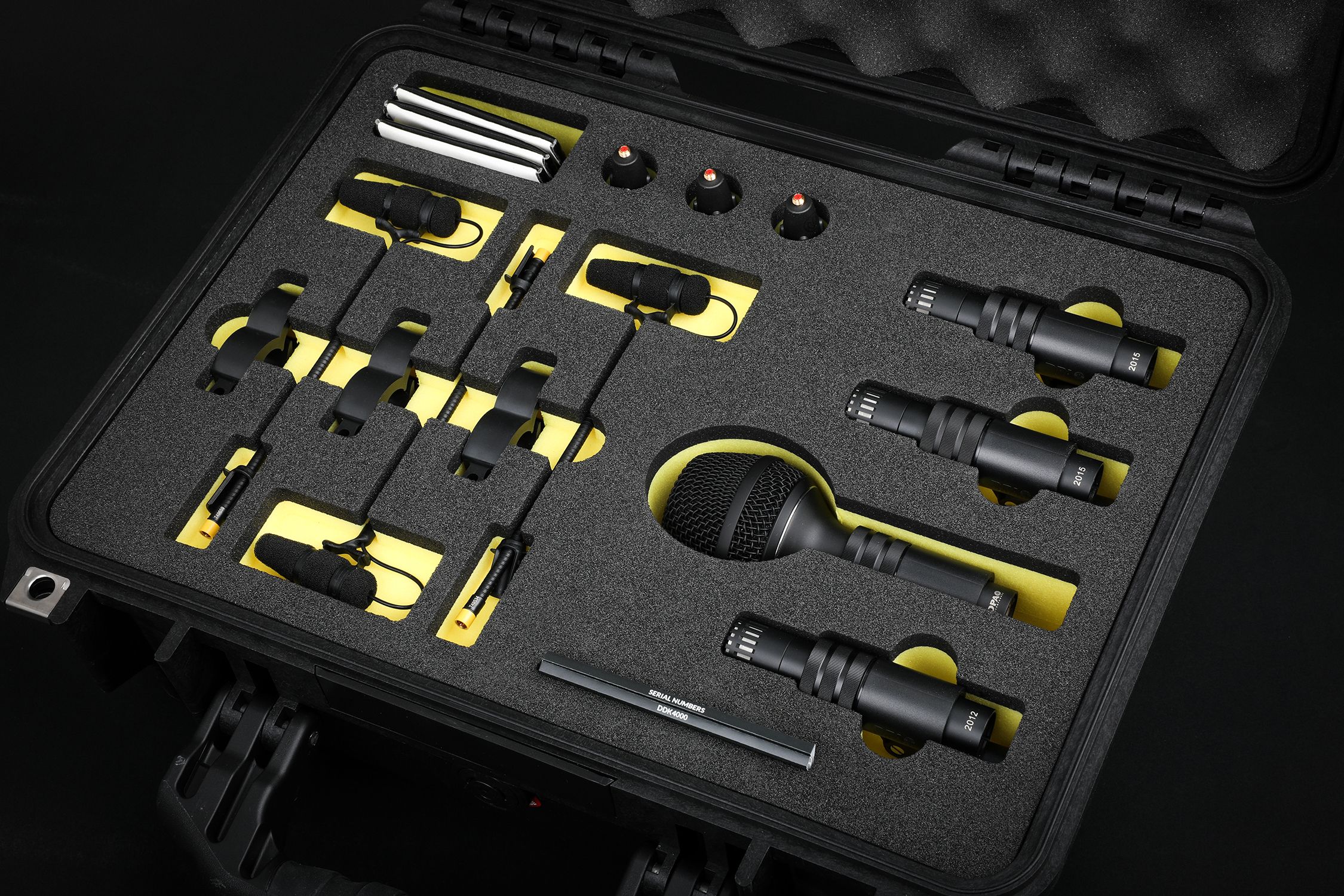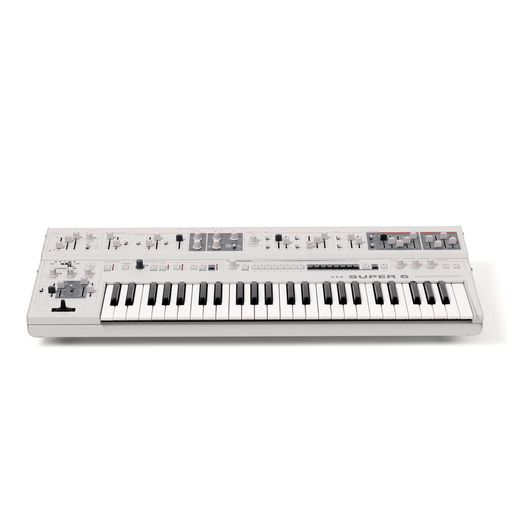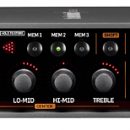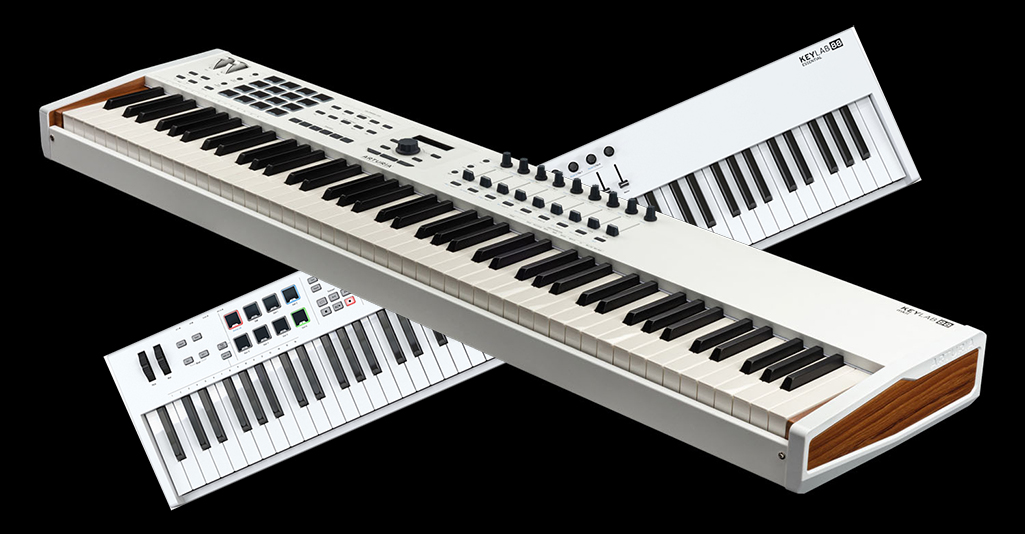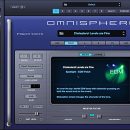By now, if you're a synth player then you are most likely familiar with Arturia and their (typically) great-sounding soft-synth versions of many beloved classic synths including the Roland Jupiter 8, Yamaha CS-80, MiniMoog, and so on. When Arturia introduced the Origin in 2009, it was their first hardware synth, and they have been quietly refining and upgrading it since that time, often times implementing features lifted from Arturia's newer soft-synth innovations.
| Category | Value | Rating |
| Features | 20% | |
| Usability | 25% | |
| Sound | 25% | |
| Documentation & Support | 10% | |
| Price | 20% | |
| OVERALL RATING = 3.4 3.6 stars or better: Outstanding, WIHO Award 3 stars or better: Worth considering 2 stars or better: Suited to specific needs 1 star or less: Not recommended |
||
Offering the ability to create your own sounds by utilizing virtual components taken from classic synths such as the Moog Modular, Yamaha CS-80, Roland Jupiter-8, MiniMoog, ARP 2600, Oberheim SEM (new in version 1.4), Sequential Circuits Prophet 5 and Prophet VS, as well as Arturia's own soft-synths such as Galaxy (derived from the Jupiter-8V), the possibilities are tremendous. Even better, you get a Multi mode for splitting and layering sounds, as well as a sequencer, arpeggiator, and an effects section (and an additional multi-effects mode for multisounds, new in version 1.4).
But… as they say in the movies, with great power comes great responsibility. So, although no one's life is at stake, there is a learning curve to fully harness all the features, and those looking for instant gratification might be a little frustrated with the amount of fiddling around with menus and knobs needed to operate things (although many of the presets are good). One thing is clear: the Origin is not simply a hardware version of Arturia software. If you are expecting to see Arturia's JP-8V software exactly duplicated on the Origin, you will be disappointed (although there is a Jupiter-8 mode). This is NOT merely Arturia's take on a Receptor.
We initially had mixed feelings about the Origin. While the Origin is certainly capable of great sounds, with so many great soft-synths around (or even a good, analog synth) that might deliver a shorter path to sonic goodness, do you really want to work so hard to make it happen? There’s no right answer to that, but clearly the Origin is for those sound designers who have the patience to reap the fruit of their labors, and over time, the Origin grew on us as we became more comfortable with its depth.
Features
The Origin has several features that should be familiar to most synth users. You use Program mode to make your own sounds, or use Multi Mode to utilize your programs in splits and layers. These, as well as the effects and arpeggiator, are accessed with more than fifty rotary encoders, twelve of which can be used as push-button selectors, more than eighty buttons, a spin wheel (which is also a push-button), and a joystick. Since the Origin is essentially a modular synth, having this many controls cuts down on scrolling through menus trying to piece your sound together, particularly if you are starting from scratch and not using a preset. However, there is still quite a bit of fiddling to get to everything.
The central screen is a 320 x 236 pixel color LCD, which unfortunately is not a touch screen. Instead, there are eight buttons below the screen that serve as your primary starting points. These buttons take you to the Home, Preset, Program, Edit, Multi, Sequencer/Arpeggio, Effects, and Live pages respectively. There are 400 factory presets, with an additional 600 memory locations for user creations.
The sound generator is Arturia's TAE modeling system, long used in their software adaptions of many popular classic synths. Polyphony seems surprisingly limited at first glance: 32 voices. However, considering that the original synths may have had only four, six, or even only a single voice, this may be more than enough.
Other features include up to nine oscillators (including analog emulations from the Minimoog, ARP 2600, CS-80, JP8, and ProV); up to four wavetable oscillators; up to four filters (switchable multimode filters including analog emulations 1, 2 & 4-poles LP, HP, BP and Notch modes); up to four output VCAs; up to five mixers; up to four poly LFO and two mono LFO mono; and up to eight ADSR Envelopes modules. That's a lot of horsepower! Further, there are two templates for creating MiniMoog and Jupiter-8 specific sounds. Unfortunately, presets from the JP-8V soft-synth are not interchangeable with the Origin.
There are a number of effects in the effects section: parametric EQ, ring modulator, rotary speaker, bitcrusher, chorus, delay (stereo & ping pong), reverb, distortion, and dual phaser. You may use three effects per program, either in series or parallel. There is also a 32-step sequencer, and the arpeggiator has forward, backward, forward and backward, and random modes. We previously mentioned that there are 1,000 programs (400 factory, 600 user), but there are also an additional 256 Multisounds (100 factory, 156 user). Multisounds can include up to four programs, which can also be layered and split as you choose.
The I’s and O’s are well represented on the backside of the unit. You get a headphone jack, two main outputs, two main inputs, eight individual axillary outputs, S/PDIF out, one foot controller jack and one footswitch controller jack, MIDI In, Out, Thru, and a USB 2 connector. Of course, there’s a DC power jack as well.
Weight comes in at 8 kg/17.6 pounds. Origin is rack-mountable, but you will need 6U of space to accommodate it.
Finally, Origin Connection is a downloadable application that enables you connect the Origin to your Mac or PC. The software allows for library management/archiving of your presets, and facilitates upgrading the firmware.
Usability
The Origin is one deep synth! Those looking for presets, just press the Preset button under the screen, and voila! You now can press buttons above the screen to choose from your program, multi, or new menus. Given so many sounds, it’s unfortunate there’s no touch screen for navigation: we had to rely upon a rotary knob to scroll. Pressing down on the large rotary knob (under the Arturia logo) selects what you have highlighted.
If you wanted to create your own sounds from scratch, you can go to the Preset page and select the Empty Program option. This brings up the rack screen (a visual representation of your “modules,” three rows of eight). Two slots are pre-filled with an output module and a keyboard controller module. At this point, we were unable to generate a sound hitting our keyboard because we first needed to add an oscillator. Pressing “add” from one of the buttons above the screen allowed us to choose the oscillator of our choice: Origin, ARP 2600, Yamaha CS80, Minimoog and Jupiter 8, Tonewheel, or Wavetable (derived from the Prophet VS) oscillator.
 After selection, it was (visually) placed in between the keyboard and output modules. However, no sound yet! You need to create the signal path of patching the keyboard controller to the oscillator’s input, and the oscillator’s output to the input of the output module. This was all done with buttons and knobs, which we found to be a little tedious, especially if you are building synths with many modules and complex modulations and routings. In all fairness, the layout is well thought out, but there’s still a bit of fiddling to get around. Of note, the Rack screen does not show what is connected where; it only shows which modules are being utilized and provides a means to select them for editing. The patch screen (which interestingly has 30 slots instead of 24 like the rack screen) does show connections between the modules graphically, and does allow for the re-arrangement of modules. The multicolored lines of connection, however, might be hard for some to see. Though it would have added cost to an already expensive unit, having a video out port to connect an external display (like some of the Roland or Korg synths) would have been a cool feature to see things on a larger screen.
After selection, it was (visually) placed in between the keyboard and output modules. However, no sound yet! You need to create the signal path of patching the keyboard controller to the oscillator’s input, and the oscillator’s output to the input of the output module. This was all done with buttons and knobs, which we found to be a little tedious, especially if you are building synths with many modules and complex modulations and routings. In all fairness, the layout is well thought out, but there’s still a bit of fiddling to get around. Of note, the Rack screen does not show what is connected where; it only shows which modules are being utilized and provides a means to select them for editing. The patch screen (which interestingly has 30 slots instead of 24 like the rack screen) does show connections between the modules graphically, and does allow for the re-arrangement of modules. The multicolored lines of connection, however, might be hard for some to see. Though it would have added cost to an already expensive unit, having a video out port to connect an external display (like some of the Roland or Korg synths) would have been a cool feature to see things on a larger screen.
Using effects is straightforward enough: press the FX button below the screen and a menu appears. If the onboard effects aren’t enough for you, you can send the signal to an independent out and have it come back in via the main ins. Pretty cool.
On the bottom of the Origin is the sequencer, and there are a lot of choices. Besides note sequencing, you can also choose pitches, panning, LFO rate, etc., to be sequenced. You can actually have three sequences with 32 steps each. The arpeggiator is fairly straightforward, and shouldn’t offer a challenge to use.
While there’s not enough space to fully delineate here, we would like to briefly describe a subset of pages under the Program menu. The first is the Mixer page, which allowed us to control levels of up to three effects. The next page, the Performance page, enabled us to adjust settings like pitch bend, mod wheel, expression pedal, aftertouch, and footswitch control and routings. The next page (selected by buttons on top of the screen) provided a two-dimensional envelope generator. With five stages, there were a lot of programming possibilities.
The next page contains the Galaxy Modulator. Graphically displayed with X/Y coordinates, this was derived from the Jupiter-8V soft-synth, and we found it useful for generating cyclical modulations. The next two pages controlled LFO 1 and LFO 2. A nice touch was that output could be directed to a number of places that exist in your particular program.
The recurring theme was that of great sound, lots of power, and many choices… but many buttons and knob turning.
Sound
Despite some of the fiddling, there’s no question the Origin sounds great. As we said earlier, the Origin is not just a hardware version of Arturia’s software plug-ins. Though the modules are derived from a number of classic synths (as well as original Arturia modules), the Origin isn’t meant to sound exactly like Moog, Jupiter, etc. Sure, you can get close, but we think the Origin shines when combining these various elements to create something unique. There isn’t anything out there that does quite what the Origin does.
You want to sound like Moog? Either choose a Moog preset, or create a Moog sound from scratch as described earlier. When creating from scratch, obviously you should choose a Moog oscillator and a Moog filter. Of course, you can add other modulations as you desire, and perhaps best of all, turning the knobs while playing adjusts the filters, modulations, etc., in real time, since these are not sampled sounds. Percolating, moving sounds are quite possible, both with presets and your own creations.
Perhaps what makes the Origin most interesting is the ability to combine elements that would otherwise be impossible. For example, how about taking a Jupiter 8 oscillator and adding it to a CS-80 filter? Or, how about a Minimoog oscillator with an ARP 2600 filter? It’s all up to you. Since you can use up to nine oscillators and four filters at once, there’s a lot possible. It is this ability that puts so much sonic power and uniqueness at your fingertips… if you dare!
For those really hung up on sounding like “what’s out there,” there are several downloadable banks of presets derived from bands including Genesis, Lady Gaga, Depeche Mode, and more. Good stuff! But then, do you really want to spend over $3,000 just to sound like Lady Gaga? Going beyond the fame monster is where the Origin delivers big.
Documentation and Product Support
Arturia typically provides extensive documentation with their products, and we’ve previously commended them for supplying thorough, printed manuals. Therefore we were a little disappointed that there was only a downloadable PDF guide for Origin. It’s 184 pages large, though, so there’s a lot to read if you’re going to: and chances are, you’ll need it! There is also supplemental information on Arturia’s site.
Price
Arturia Origin (MSRP $3,200 USD) sells for $2,499 street—certainly not cheap. There is definitely a learning curve, and there’s unquestionably some fiddling around required to get the most out of the Origin. However, to be able to do synthesizer gymnastics, combining so many modules with vast routing options all in one place, definitely puts the Origin in a place all of its own. If you live for complex sound design and can handle the big price tag, the Origin is worth serious consideration.
On the flip side of the price equation, though, one Origin certainly beats hauling around and maintaining eight vintage synthesizers to your gigs!
Contact Information
Arturia
www.Arturia.com
| Evaluation Short-List |
|

